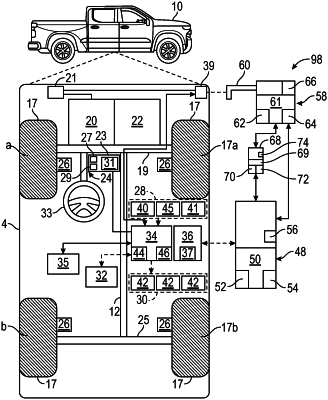| CPC G06Q 30/0208 (2013.01) [B60L 53/64 (2019.02); B60L 53/665 (2019.02); G06Q 30/0265 (2013.01)] | 20 Claims |

|
1. A method for using idle computing power of an electric vehicle, comprising:
determining, by a vehicle controller of the electric vehicle, whether the electric vehicle is in motion;
in response to determining that the electric vehicle is in motion, searching for a plurality of charging infrastructures that are located within a predetermined distance from the electric vehicle while the electric vehicle is in motion;
determining that the vehicle controller of the electric vehicle has idling computing power;
in response to determining that the vehicle controller of the electric vehicle has idling computing power, receiving, by the vehicle controller, task rates for performing computing tasks from each of the plurality of charging infrastructures that is located within the predetermined distance from the electric vehicle;
selecting one of the plurality of charging infrastructures to determine a selected charging infrastructure;
in response to selecting one of the plurality of charging infrastructures, sending, by the vehicle controller, an acceptance signal to a remote server, wherein the acceptance signal is indicative that the vehicle controller accepted to perform the computing tasks at the selected charging infrastructure; and
in response to receiving the acceptance signal from the vehicle controller, commanding the selected charging infrastructure to supply electrical power the electric vehicle while the vehicle controller performs the computing tasks once the electric vehicle is electrically connected to the selected charging infrastructure.
|